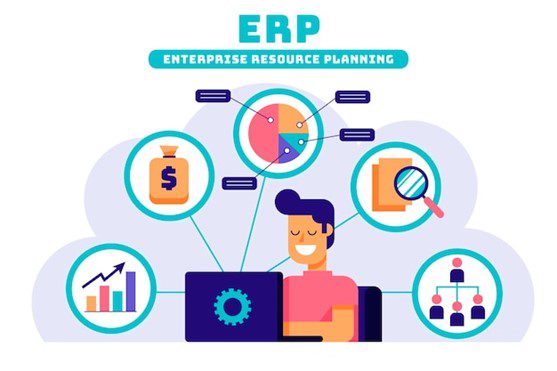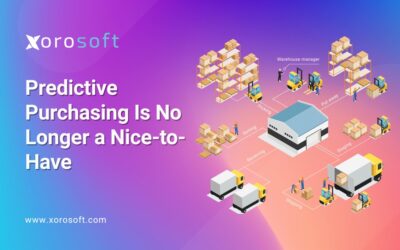
Introduction to ERP systems for small to medium-sized businesses
As a business owner or decision-maker in a small to medium-sized enterprise (SME), you’re constantly seeking ways to streamline your operations, enhance efficiency, and drive growth. One crucial tool that can help you achieve these goals is an Enterprise Resource Planning (ERP) system. However, the decision to implement an ERP solution is not one to be taken lightly, as it requires a significant investment of time, resources, and capital.
That’s where a cost-benefit analysis comes into play. In this comprehensive guide, I’ll walk you through the process of conducting a thorough cost-benefit analysis for ERP systems, helping you make an informed decision that aligns with the unique needs and constraints of your SME.
Understanding the Concept of a Cost-Benefit Analysis
A cost-benefit analysis is a systematic process of evaluating the potential costs and benefits associated with a particular investment or project. In the context of ERP systems, this analysis helps you weigh the financial and non-financial implications of implementing a new software solution, allowing you to make a well-informed decision.
Why Perform a Cost-Benefit Analysis for ERP Systems?
Conducting a cost-benefit analysis for an ERP system is crucial for several reasons:
- Informed Decision-Making: By quantifying the potential costs and benefits, you can make a more informed decision about whether the investment in an ERP system is justified and aligns with your business goals.
- Budgeting and Resource Allocation: The analysis provides a clear understanding of the financial resources required for the ERP implementation, enabling you to allocate your budget effectively.
- Risk Mitigation: Identifying potential risks and challenges upfront can help you develop strategies to mitigate them, ensuring a smoother implementation process.
- Competitive Advantage: Implementing the right ERP system can give your SME a competitive edge by improving operational efficiency, inventory management, and overall business performance.
Key Factors to Consider When Evaluating ERP Systems
When conducting a cost-benefit analysis for ERP systems, there are several key factors to consider:
- Organizational Needs and Requirements: Thoroughly assess your business’s current processes, pain points, and future growth plans to determine the specific features and functionalities you require from an ERP system.
- System Integration and Compatibility: Evaluate how well the ERP system integrates with your existing software, hardware, and IT infrastructure to minimize disruptions and ensure seamless data flow.
- Vendor Reputation and Support: Research the ERP vendor’s track record, customer satisfaction, and the level of ongoing support and maintenance they provide.
- Implementation Complexity and Timeline: Understand the complexity of the implementation process, including the time and resources required for successful deployment.
- Training and Change Management: Consider the costs and efforts involved in training your employees to use the new ERP system and managing the organizational change it will bring.
- Scalability and Future Adaptability: Evaluate the ERP system’s ability to grow and adapt as your business expands, ensuring it can meet your long-term needs.
Analyzing the Costs of Implementing an ERP System
The costs associated with implementing an ERP system can be categorized into the following areas:
- Software Licensing and Subscription Fees: This includes the initial purchase or ongoing subscription costs for the ERP software.
- Hardware and Infrastructure Upgrades: You may need to invest in new servers, networking equipment, or other hardware to support the ERP system.
- Implementation and Consulting Services: Engaging with ERP implementation experts can help ensure a successful deployment, but these services come with a cost.
- Training and Change Management: Budgeting for employee training, documentation, and change management initiatives is crucial for a smooth transition.
- Ongoing Maintenance and Support: Factor in the costs of software updates, bug fixes, and technical support from the ERP vendor.
- Opportunity Costs: Consider the potential lost productivity and revenue during the implementation and transition period.
By carefully analyzing these cost factors, you can develop a comprehensive understanding of the financial investment required for the ERP system.
Identifying the Potential Benefits of an ERP System
The benefits of implementing an ERP system can be both financial and non-financial. Some of the key benefits to consider include:
- Improved Operational Efficiency: ERP systems streamline business processes, reduce manual tasks, and enhance productivity.
- Enhanced Inventory Management: ERP systems provide real-time visibility into inventory levels, reducing stockouts and overstocking.
- Improved Financial Reporting and Accounting: ERP systems integrate financial data, enabling more accurate and timely reporting.
- Better Decision-Making: ERP systems provide valuable data and analytics, empowering you to make more informed, data-driven decisions.
- Increased Customer Satisfaction: ERP systems can improve customer service by streamlining order processing, delivery, and invoicing.
- Regulatory Compliance: ERP systems can help ensure your business remains compliant with relevant industry regulations and standards.
- Scalability and Adaptability: A robust ERP system can support your business as it grows and evolves, adapting to changing needs and requirements.
How to Calculate the Return on Investment (ROI) for an ERP System
To determine the overall return on investment (ROI) for an ERP system, you’ll need to carefully weigh the identified costs and benefits. Here’s a general approach:
- Quantify the Costs: Compile the total costs associated with the ERP system implementation, including the categories mentioned earlier.
- Estimate the Benefits: Assign monetary values to the potential benefits, such as increased productivity, reduced inventory costs, and improved financial reporting.
- Calculate the Net Benefits: Subtract the total costs from the total benefits to determine the net benefits.
- Determine the ROI: Divide the net benefits by the total costs, and express the result as a percentage to get the ROI.
The formula for calculating ROI is:
ROI = (Net Benefits / Total Costs) x 100
By calculating the ROI, you can assess whether the investment in an ERP system is financially justified and aligns with your business objectives.
The Importance of an ERP System in Inventory Management and Accounting
ERP systems play a crucial role in streamlining inventory management and accounting processes for SMEs. Some of the key benefits include:
- Inventory Optimization: ERP systems provide real-time visibility into inventory levels, enabling you to make informed decisions about purchasing, stocking, and distribution.
- Automated Inventory Tracking: ERP systems automate the process of tracking inventory movements, reducing the risk of human error and ensuring accurate data.
- Improved Forecasting and Planning: ERP systems leverage historical data and analytics to help you make better-informed decisions about inventory levels, production planning, and procurement.
- Enhanced Financial Reporting: ERP systems integrate financial data, such as accounts payable, accounts receivable, and general ledger, providing a comprehensive view of your financial performance.
- Compliance and Regulatory Adherence: ERP systems can help ensure your business remains compliant with relevant accounting standards and industry regulations.
Comparing Xorosoft ERP with Other ERP Solutions in the Market
As you evaluate ERP systems for your SME, it’s essential to compare the features and capabilities of different solutions. One leading ERP provider in the market is Xorosoft, which offers a comprehensive suite of tools designed to address the unique needs of small and medium-sized businesses.
Xorosoft ERP stands out from other solutions in several ways:
- Tailored for SMEs: Xorosoft ERP is specifically designed to cater to the requirements of small and medium-sized enterprises, offering a more scalable and cost-effective solution compared to enterprise-level ERP systems.
- Modular and Customizable: Xorosoft ERP features a modular architecture, allowing you to select the specific functionalities your business requires and customize the system to fit your unique processes.
- Robust Inventory Management: Xorosoft ERP’s inventory management module provides advanced features, such as real-time inventory tracking, automated replenishment, and integration with e-commerce platforms.
- Comprehensive Accounting and Financial Reporting: The Xorosoft ERP solution offers robust accounting and financial management capabilities, including general ledger, accounts payable, and accounts receivable.
- User-Friendly Interface: Xorosoft ERP boasts a modern, intuitive user interface that enables quick adoption and seamless integration with your existing workflows.
- Dedicated Customer Support: Xorosoft provides comprehensive customer support, including training, implementation assistance, and ongoing maintenance, to ensure a smooth and successful ERP deployment.
Choosing the Right ERP System for Your Business
When selecting the right ERP system for your SME, it’s essential to consider the unique needs and constraints of your business. By conducting a thorough cost-benefit analysis, you can make an informed decision that aligns with your strategic objectives and financial resources.
Remember, the choice of an ERP system is not a one-size-fits-all solution. It’s crucial to carefully evaluate the features, capabilities, and long-term viability of the ERP solution to ensure it can grow and adapt with your business.
The Role of Xorosoft in Providing Comprehensive ERP Solutions
At Xorosoft, we understand the unique challenges faced by small and medium-sized businesses. That’s why we’ve developed a comprehensive ERP solution that combines cutting-edge technology with a deep understanding of the SME landscape.
Our team of ERP experts works closely with you to assess your business needs, design a tailored solution, and ensure a seamless implementation process. From inventory management and financial reporting to customer relationship management and business intelligence, Xorosoft ERP provides a centralized platform to streamline your operations and drive growth.
Book a Demo with Xorosoft to explore how our ERP solution can transform your business and unlock new opportunities for success.
Conclusion: The Significance of a Cost-Benefit Analysis for Small to Medium-Sized Businesses
In today’s competitive business landscape, small to medium-sized enterprises must continuously seek ways to optimize their operations, improve efficiency, and enhance their overall competitiveness. Conducting a thorough cost-benefit analysis for an ERP system is a crucial step in this journey.
By carefully evaluating the potential costs and benefits, you can make an informed decision that aligns with your business goals and financial resources. Whether you choose Xorosoft ERP or another solution, the insights gained from this analysis will empower you to make strategic investments that drive long-term success for your SME.









